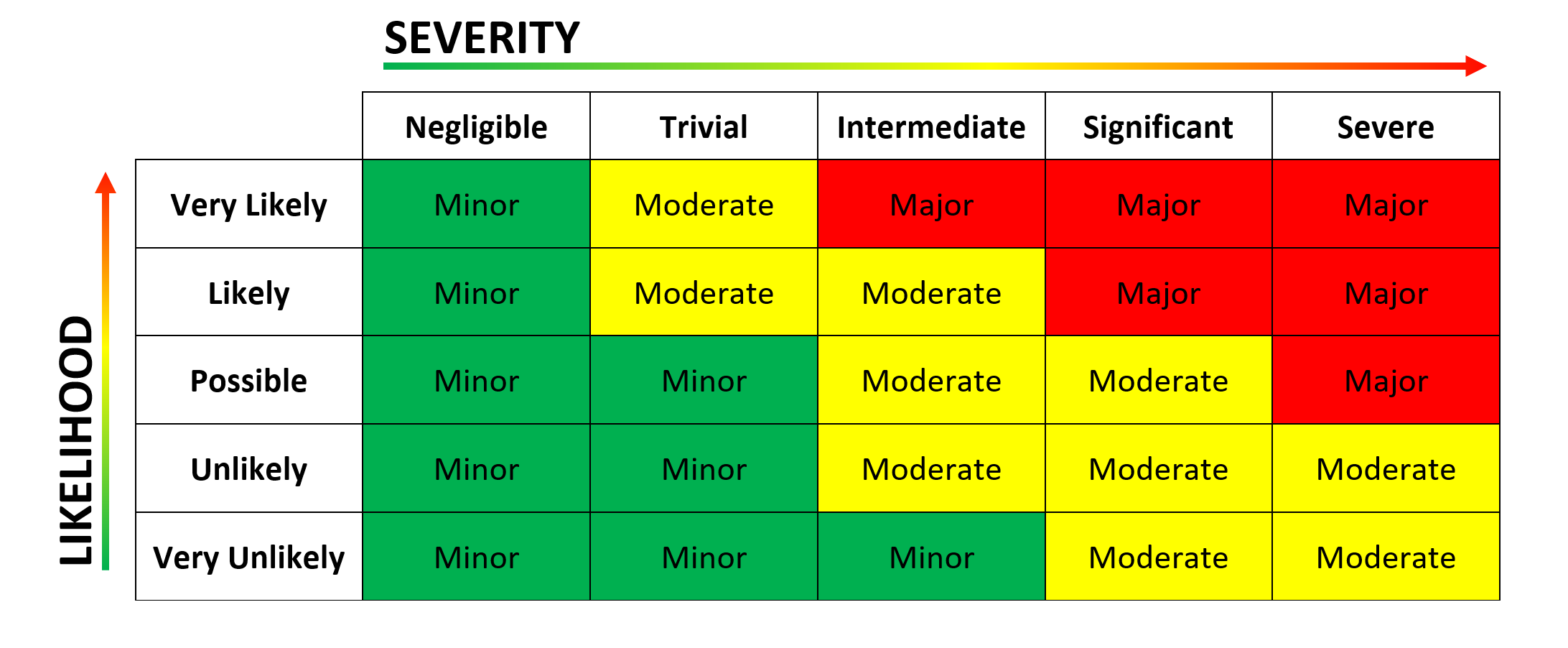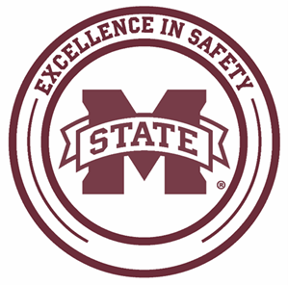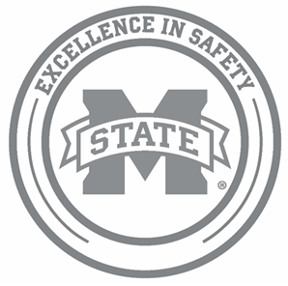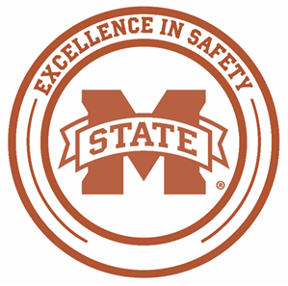EH&S conducts annual Facility Safety Reviews. These reviews aim to identify potential hazards that can adversely affect the health and safety of faculty, staff, students, and visitors. These reviews focus on fire safety, shop safety, emergency equipment, means of egress, storage, electrical safety, compressed gas cylinders, space heaters, etc.
Graded Facility Safety Review Checklist
EH&S is enhancing the facility safety review by using an objective risk-based score and rating for each area and building. In order to provide this score, hazards are ranked via a risk assessment matrix that evaluates the likelihood of adverse outcomes versus the severity/impact of the hazard.

Severity/impact determinations are multifaceted, and key considerations include:
- Direct risk to the health and safety of building occupants
- Indirect risk to the university community
- Risk of regulatory noncompliance that potentially disrupts standard operations, imparts fines, or promotes a negative public perception of the university.
Based upon the risk assessment, hazards are graded in accordance with the following criteria:
- Major Risk (worth 3 points) – hazards that have a high likelihood of causing severe injury, major proper damage, significant financial loss, and/or result in negative publicity for the university.
- Moderate Risk (worth 3 points) – hazards that have a moderate likelihood of causing injury, illness, property damage, financial loss, and/or result in negative publicity for the university.
- Minor Risk (worth 1 point) – hazards that have a minor likelihood of causing injury, illness, or property damage, little to no financial loss and/or result in negative publicity for the university.
EH&S has developed an extensive Facility Safety Review Checklist, offering an overview of potential hazards. It is important to note that not all items listed on the checklist will necessarily be relevant or applicable in every situation.
Facility Safety Review Procedure
Facility Safety Reviews will be scheduled by a representative of the core review team in coordination with the building operator. Every effort will be made to conduct reviews so as to avoid disruption of teaching, business, and research activities.
Any hazard presenting an imminent danger to personnel, or the facility discovered by the review team will be immediately reported to the department/unit head with a recommendation for the immediate mitigation of the hazard. The recommendation may include, but is not limited to:
- Immediate cessation of an unsafe activity pending procedural revision and/or training
- Stop-usage of unsafe equipment pending repair or replacement
- Immediate repair or replacement of improperly or non-functioning safety equipment or systems, such as fire alarm, sprinkler systems, and fire suppression systems
At the conclusion of the review, a written report will be compiled by the core review team including any deficiencies or items of non-compliance. The report will be provided to the Assistant Director of Environmental Health & Safety, the department/unit head, building operator, Facilities Management, and others as applicable.
A follow-up review will be conducted 45 calendar days after the original facility safety review to monitor progress in correcting deficiencies and provide assistance if necessary.
Recognition and Rewards
Departments that earn a stellar Facility Safety Review scores will be recognized online as well as receive a certificate. The Rating schemes are as follows:
Maroon: Awarded to departments that achieve 95% or above safety scores.

Silver: Awarded to departments that achieve 90% to 94.9% safety scores.

Bronze: Awarded to departments that achieve 85% to 89.9% safety scores.

Building Operators within Departments that earn a Maroon rating will receive an Excellence in Safety coin to commemorate their stellar achievement. Additionally, Building Operators that achieve outstanding safety scores may be considered for other safety awards.